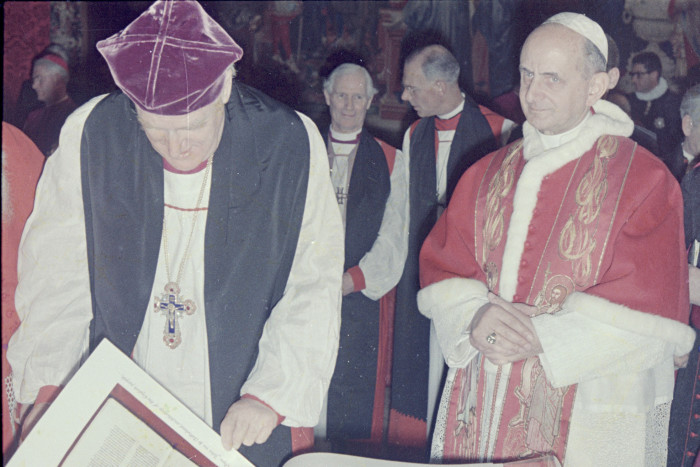
March 1966 saw an historic visit to the Vatican, the first official visit by an Archbishop of Canterbury since – incredibly – Thomas Arundel in 1398. Rightly, it will be much celebrated during the year ahead. The visit had been made possible by the Second Vatican Council, which formally opened up the Roman Catholic Church to other Christian denominations. It fell to Archbishop Michael Ramsey to take the crucial step. At a service at the Anglican Centre in Rome earlier this week, Bishop Stephen Platten called Ramsey “an Anglican ambassador of Christ to the Holy Father”.
The word “ambassador” made me sit up and think. There are many who believe that the worlds of diplomacy and religion should be kept strictly apart. That’s tricky for the ambassador to the Holy See, but even certain colleagues in the Foreign Office would argue that ecumenical relations (the relationships between different Christian churches) or interreligious dialogue (contacts between people of different faith) have nothing to do with foreign policy. Caesar deals with Caesar, not God, they might say.
This seems to me increasingly untenable, in a world where – outside Western Europe – religious observance is on the rise, and where religion is invoked as a prime motivating force, for good or ill, for the actions of individuals and communities in conflict, in peacemaking, in development, in daily lives. Michael Ramsey was reaching out to end a breach that had lasted for over 400 years, a breach that had led to warfare, persecution, terrorism and ingrained mistrust, even hatred. Fast forward to 2016, and it is easy to see why the lessons learned over the fifty years since might be relevant today. We can’t afford to allow such catastrophic breaches between religions to open up again.
One fruit of the visit was the creation of the Anglican Centre in Rome. Pope Paul VI told visiting Anglicans in October 1966 that the Centre’s prime role was to promote better mutual knowledge between Anglicans and Catholics, “a knowledge free of prejudice, informed by reverence, eager to discover not only what separates us but what unites us; a knowledge which banishes mistrust and clears a path by which we may draw nearer still”. Barring perhaps the reverence, that’s not a bad mission statement for an ambassador. And it’s why, as an embassy, we do what we can to help facilitate the many ecumenical and interreligious relationships with which the Holy See is engaged, especially those involving the United Kingdom. It’s not in my job description but, in 2016, it seems the right thing to do.
